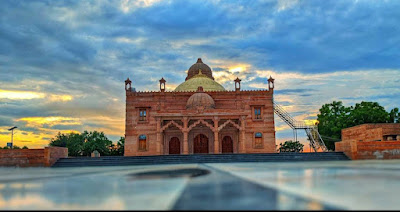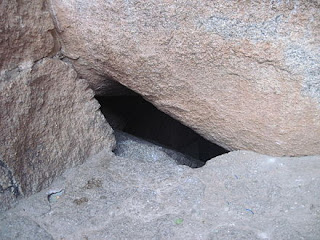Rani Mangammal
"My people first and foremost."
Rani Mangammal ruled Madurai at the close of the 17th century for 18 years, with great sagacity and resourcefulness in a very turbulent and unsettled period in its history. Like many other women rulers she had to overcome prejudice about her ability based on her gender. However her successful rule at a fractious time in Madurai, and in a turbulent neighbourhood, only proved that she was the right woman for the job, at the right time. And like the Bhaumakara queen Tribhuvanamahadevi about seven centuries earlier and the Kakatiya Rani Rudramadevi of Warangal about five centuries earlier, Mangammal was yet another grandmother who ruled in her own right until her grandson was old enough to be crowned king.
It is fascinating to realise that these worthy women simply did not allow the prevalent notions of their age and gender to come in the way of being successful rulers. They used the opportunity given by sheer chance to rule and bring about positive changes on the ground.
Family history
Chokkanatha Nayaka wanted to marry the daughter of Vijayaraghava Nayaka of neighbouring Thajavur as his second wife. Vijayaraghava Nayaka rejected the offer, and died with his son in the battle initiated by Chokkanatha. The women of the family committed suicide. At this time the Maratha ruler Shivaji attacked Thanjavur and established Maratha rule there. Also an attack on Madurai by the Mysuru army was repulsed with the help of the rulers of Gingee and Ramanathapuram. With all this turmoil in the land Chokkanatha Nayak was deposed on the grounds of insanity.
Although he was reinstated later, Chokkanatha Nayak died soon after. His son Lingama Krishna succeeded to the throne. However, Lingama Krishna born in 1666-67 died of small pox at the age of 21 before he could have much of an impact on the forces arrayed against Madurai. His mother Mangammal then became regent for her infant grandson Vijayaranga Chokkanatha who was born after the death of Lingama Krishna.
A troubled neighbourhood and a surfeit of enemies
The start of Mangammal’s tenure (1689-1706 CE) was no bed of roses. She was besieged by trouble on all sides with no help from anyone. Mangammal had to contend with the Marathas of Thanjavur ruled by Shivaji's son Shahu, the Mughal Aurangzeb, Raja Ravi Verma of Travancore and the Mysuru army of Raja Chikka Deva Raya - all actively trying to establish their hegemony over the region. This resulted in non-stop political and military strategems, alliances and readjustments among the various players. Mangammal, in the meanwhile, had laser focus on improving the lot of Madurai’s citizens and keeping the kingdom safe. As such she was prepared to do anything to achieve this.
The key players in the game
Mughal
It was during Mangammal’s reign that Madurai came in contact with the Mughals. Aurangzeb was bent upon invading Madurai and Thanjavur after conquering the fort at Gingee from Shivaji’s son Rajaram.
In 1693 Zulfiquar Ali, Aurangzeb’s general, planned to attack Madurai. In a cool assessment of the situation Mangammal realised that Thanjavur and Mysuru had sent tributes to the Mughals to avert bloodshed, so she decided to follow suit.
Not only that, she also got the assistance of Zulfiquar Ali to retrieve some of her territory from Shahu of Thanjavur. She liberally gave gifts to the Mughals for their assistance against her enemies. Her priority always was to ensure no harm came to her subjects due to warfare and that she did not lose territory.
Mysuru
The kingdom of Mysuru wanted to capture Madurai even when Chokkanatha was alive. Now, after his death, they thought they had a ready advantage with a woman on the throne. The Mysuru army captured Coimbatore and Salem within Mangamma’s territory. However, they were recalled before they could capture Madurai when Mysuru was itself attacked by the Mughals.
Travancore
The Raja of Travancore had been a feudatory of Madurai for years, but now the ruler Raja Ravi Verma began to withhold paying the tribute expected of him. So he had to be brought in line. Mangammal sent a force under the general (Dalavoy) Narasappaiah which included troops from other chieftains of Madurai to show she should be taken seriously and could not be trifled with. The force returned to Madurai with enormous booty.
Maratha
When the Madurai army defeated Shahu’s forces at Thanjavur to punish him for repeatedly taking away territory, a peace treaty was signed between them. They even decided to jointly fight Mysuru for building a dam across the Kaveri and depleting water at Madurai and Thanjavur. However, before they could do so the dam collapsed in heavy flooding due to rains, thus averting war.
Ramanad
The powerful ruler of the principality of Ramanad, Raghunatha Sethupathy, was in revolt and was aiming to become an independent ruler. He brought about Mangammal’s greatest military defeat which resulted in the death of her trusted Dalavoy Narasappaiah and the decline of Madurai from which it could never recover.
The practical ruler
The reign of Mangammal points to the prosperity of Madurai and her resourcefulness in ensuring the welfare of her people above all else. She is remembered even today for her excellent administration. Her memory lives on through the public works she carried out. In the political sphere the measures she carried out ensured that Madurai did not fall to the covetous powers that surrounded it, but remained as an independent entity. Not only that, she also ensured the return of some parts of the kingdom that had been handed over to other powers earlier, or that had been lost in battle before her reign.
Why is Mangammal still remembered even centuries later?
Apart from her military exploits and excellent administration, Mangammal is remembered for her diplomatic skills and the courage to face the trying circumstances before her both internally and externally. In fact, all her dealings with external powers were to explore how best to ultimately benefit her people best. She was forward-looking and constantly interested in general welfare.
This attitude led to the construction of better civic facilities such as roads and avenues. Her capital was Tiruchi and she constructed several Anna Chatiram, food inns, on the Madurai -Tiruchi road. There were special horse stables along the road. She kept not just the physical health of the population in mind but also their psychological wellbeing by encouraging the construction of temples, irrigation canals and water bodies, celebration of festivals and even-handed interaction with her subjects regardless of their religious affiliations. Many of her public works in Madurai are still in use today.
She promoted trade and industry, built irrigation networks, an improved road from Kanyakumari to Madurai named Mangammal Salai, and a rest-house which presently stands near the Madurai railway station. Tamukkam Palace built during her reign is now a museum.
She was open-minded and generous towards converts to Islam and Christianity. She endowed the temple of Meenakshi for which Madurai is famous, and ruled in the name of the deity. This was a practice by many rulers at the time who considered themselves to only be a servant while the real ruler was God.
Her last days
Mangammal died in 1706 after her grandson attained majority and was able to rule. The circumstances of her death are unclear since no verified account is available.
Thus ruled a sensible queen who ran a stable government although the external circumstances were stormy and could easily have spelt disaster for a less experienced and immature ruler. Mangammal’s calm and steady hand ensured that the citizens of Madurai remained safe, and prospered without losing their lives or property during her reign.
Ref. -
History of the Nayaks of Madura. R Satyanatha Aiyar
Madras District Gazetteers: Madurai - B S Baliga, 1960
Psycho-biography: The last days of Rani Mangammal - Dr. O Somasundaram







